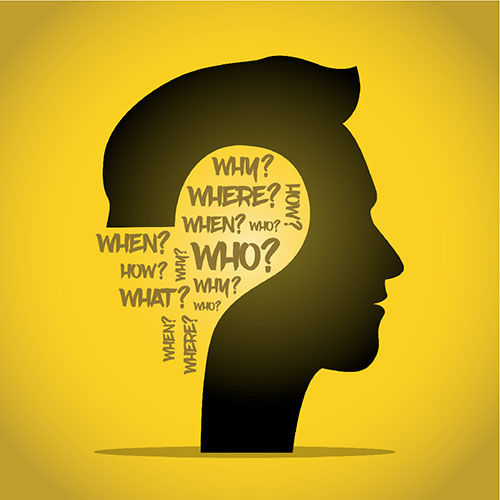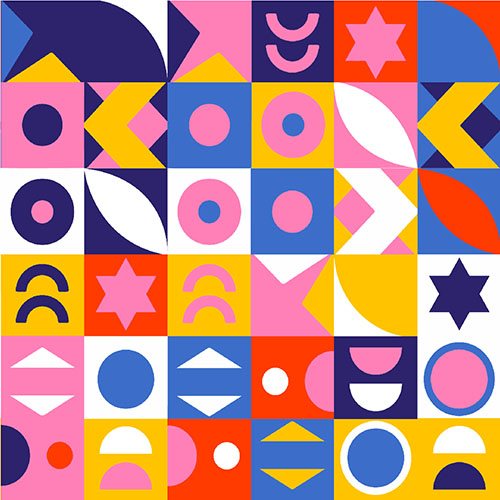
Design psychology in creatives
Design psychology in creatives
The world of design mesmerizes the human eye and mind in fascinating ways. Let’s check out the creative wiring that enables this impact and inspiration in our design psychology in creatives blog. Read on…
Whatever the human mind receives, it interprets it and then decides the journey that thought or word will take. Will it be just another word forgotten in the next minute or will it be the one that inspires and ignites for a long time ahead? This crucial decision is what we call psychology. It is a deal breaker in literally every aspect of our lives. So, when it comes to marketing and design, psychology is a non-negotiable part that controls the steering in the journey of success!
Design psychology is a tool that all brands and designers must leverage to their benefit. In a plethora of options and amidst the marketing noise, let you brand and design be heard, seen and create impact intended on the consumer.

Let’s begin with understanding the term design psychology in creatives –
In a nutshell, design psychology focuses on how designs can shape the way people think and feel. Certain colors, design placements and shapes can inspire human mind, and lead to developing certain reactions, and emotions in the mind of the consumer. It involves researching and comprehending consumer behavior, with the goal of creating designs that resonate with them and achieve the intended impact.
Ever wonder why certain brands have such a strong allure? Why a particular advertisement or design instantly comes to mind when you need to make a purchase? Or why you favor one product over another, even without prior experience? It all boils down to design psychology, which cleverly taps into our human nature, creating positive triggers in our minds that make us more inclined to choose one product over another.
Why should your design be inspired by psychology and not just information presented with beauty…
Understanding psychology plays a pivotal role in this process. It helps designers and creators connect with their audience on a deeper level. By delving into the intricacies of human behavior and preferences, they can tailor their designs to evoke specific emotions, trigger memories, and provide solutions that truly resonate with consumers.
Understanding psychology empowers designers to not just create visually appealing work but to also forge a meaningful connection with their target audience, ultimately leading to greater success in the world of design and marketing.
The markets are evolving and creating a winning edge over all the competition is important from survive to thrive. Using this, brands can easily communicate and stand out, reach audience and make an impact. Even smaller brands with defined or limited budgets can easily leverage psychology in creativity for meeting their marketing goals.
To make a lasting impression and build brand value, trust and faith from your consumers are key. Understanding your audience's expectations and behavior enables you to incorporate familiar elements into your design, creating a sense of comfort and trust. This familiarity puts your consumers at ease and helps establish and reinforce trust in your brand.
Psychology in creatives for designers –
Here’s a quick look at the bets psychology tips and trends designers can use to leverage creativity for desired output and results…
Color
The use of colors is undeniably one of the most influential aspects when it comes to engaging with an audience. Extensive research has shown that colors have a profound impact on the human mind. People often employ colors to convey messages and trigger emotional responses. They possess the unique ability to evoke feelings, memories, and more. Experts suggest that within a mere 90 seconds of encountering any form of communication, the audience forms unconscious judgments about your brand, product, or service. These critical first impressions are significantly shaped by the choice of colors in your design.
Colors can elicit a wide range of emotions and associations. For instance, red is often associated with excitement, strength, and even anger. Blue, on the other hand, is known for fostering trust and a sense of security. Green tends to invoke thoughts of prosperity, health, and nature, but can sometimes be linked to envy. Orange is a color that brings forth impulses, energy, and courage. White signifies peace and tranquility, while black conveys power and passion. Yellow, in turn, is connected to warmth, positivity, hope, and creativity. Each color has its unique effects, both positive and negative, the designer must carefully align the colors with other elements to create the right perception intended.
Strategically incorporating these colors, aligning them with your core goals, can greatly enhance the impact of your design. It's important to note that the perception of colors can vary based on factors such as age, gender, and geography.

Fonts
Fonts play a crucial role in communication and have the ability to evoke emotions in viewers. They not only convey words but also help craft a narrative that resonates with your audience's desires. Fonts are a vital component of typography, and they have their own psychology that influences human emotions. Leveraging the unique characteristics of fonts, along with subtle cues and nuances, designers can guide the viewer's perception and generate specific emotions or feelings.
Different typefaces have distinct effects on human emotions, and this understanding is an integral part of typography. Here's a breakdown of some font categories and their emotional associations-
Serif - Serif fonts, with their elegant, decorative serifs, often convey sophistication, tradition, and respect.
Sans Serif - Sans serif fonts are clean and modern, giving off a minimalistic and efficient vibe. They are associated with simplicity and modernity.
Script - Script type fonts are known for their flowing, cursive appearance, which evokes elegance, creativity, and a sense of personal touch.
Heavy - Heavy, bold fonts project strength, authority, and stability. They are often used to make a strong impact.
Rounded - Fonts with rounded edges tend to be perceived as friendly, approachable, and warm, making them suitable for more casual and welcoming messages.
Additionally, decorative or display fonts can be employed for specific design goals, adding flair and uniqueness to the visual message. Strategic use of font psychology, in combination with color psychology, can significantly enhance the effectiveness of your design. When fonts are carefully selected to align with the brand's identity and messaging, they can help shape the viewer's perception and create a strong emotional connection, leading to greater success in achieving design objectives.
Shapes
Shapes play a crucial role in design, bringing it to life. They have a subtle but powerful impact on the viewer's emotions and behavior. Experts suggest that shapes can influence how people respond to a design and shape their perceptions.
Different shapes convey different feelings and can be used to create specific outcomes in a design. For example, geometric shapes like squares and rectangles are associated with strength and familiarity. Triangles represent balance and adventure, while circles and ellipses imply fluidity and unity.Shapes like pentagons and hexagons can bring a sense of professionalism and order to a design. Abstract shapes can add complexity, while natural shapes evoke feelings of purity and a connection to the earth. Spirals can symbolize growth and intelligence, and different types of lines, like horizontal and vertical lines, can convey calmness or strength.Understanding the psychology of shapes allows designers to make intentional choices that align with the emotions and messages they want to convey. This thoughtful use of shapes can create designs that resonate with the audience and effectively communicate the desired message.
Latest Blogs
- Graphic design trends for 2024.
- Photography and Graphic Design: A Powerful Duo
- Design and Playful humor
- Brand awareness – formality or necessity?
- Influencer marketing
- Creative agency or branding agency or advertising agency – which is ideal for your brand
- Can AI replace the digital marketers
- Can AI help in designing?
- The power of storytelling in advertising
- Design psychology in creatives

